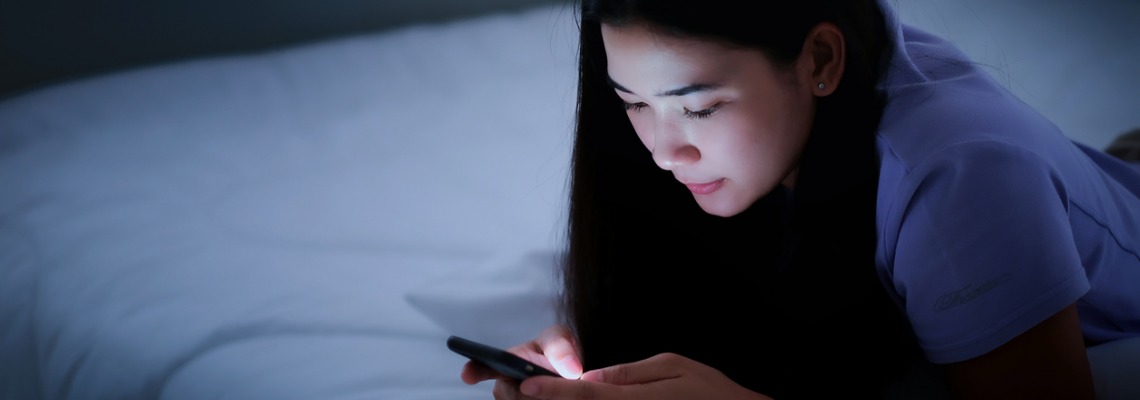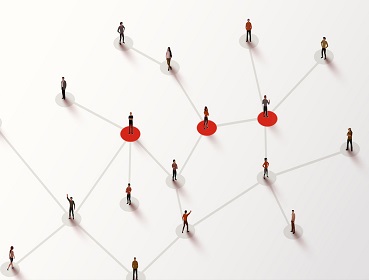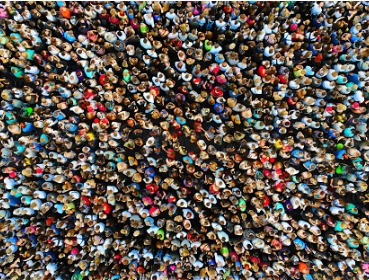Killing you slowly
The dangers that lie inside and outside our beloved devices
With 98% of people in Singapore currently using smartphones and a projected 93.4% internet penetration rate by 2025, it could be said that Singapore is an internet-reliant country. After all, residents spend, on average, a whopping 7 hours and 29 minutes every day surfing the web.
But, are we aware of the dangers that lie within our seemingly unassuming devices?
The dark side of blue light
A recent study conducted in two large metropolitan cities, found that artificial blue light, emitted from cell phones, computer screens, and even streetlights, may increase your risk of developing breast and prostate cancer by an alarming 50%!
So what exactly is blue light, and why is it so dangerous?
Essentially, blue light is a colour in the visible light spectrum that can be seen by human eyes. The sun emits it, our light bulbs emit it, and it is actually beneficial to us. Seems innocent enough, right? Besides, during the day, it boosts our attention and reaction times, as well as our mood.
However, due to the advent of new technological devices such as our handphones and computers, blue light is becoming more apparent at night, a time where it doesn’t naturally occur and where it is at its most destructive.
Shedding (blue) light on cancer
The link between blue light exposure and cancer lies in the disruption of our circadian rhythm–the body’s natural clock.
In the age before LED screens and light bulbs, our ancestors lived their nights in relative darkness, limiting their activities and exposure to blue light. In today’s time, we are blessed with massive 75-inch TVs, and are grossly engrossed in our handphones and tablets that preoccupy us way into the night. This privilege though, comes with a price.
When we stay up late, binge-watching our favourite shows or gaming with our friends, we mess up our circadian rhythm. This disruption, coupled with prolonged exposure to blue light, decreases our body’s melatonin production. Due to melatonin’s cancer-mitigating properties, this reduction in its production is associated with increased tumour development, promoting diseases such as breast and prostate cancer.
Despite this merely being an association and not a direct causation, the results of the study are nonetheless worrying and act as a cautionary tale.
So, blue light isn’t intrinsically problematic. The issue is that it tricks our brains into thinking it’s still daytime, which explains why we find it easier to stay awake even though we are meant to feel pleasantly drowsy with sleep when the sun goes down.
Maybe darkness isn’t so bad
Thankfully, since nighttime blue light is an element we willingly expose ourselves to, there are multiple ways to easily reduce it.
The most obvious is to simply have the mental fortitude to turn our devices off and go to bed at a reasonable hour. Cutting out bright screens two to three hours before bed is recommended. But, that’s easier said than done.
Alternatively, most devices these days feature a dark mode or a night shift mode option which filters out blue light, lessening the strain on our eyes.
Getting a couple of dim and red night lights could also help as they are less likely to disrupt the circadian rhythm and suppress melatonin production.
Night shift workers and people who are prone to using their devices in the wee hours are advised to wear blue-blocking glasses or install an app that filters the blue/green wavelength at night.
Light isn’t the only danger lurking
The dangers of blue light aside, what we consume on our screens is another pertinent problem that has plagued us and must be addressed.
From chiselled jawlines and washboard abs to tiny waists and perfect skin plastered all over social media, Singaporeans today are not spared from the idea of body perfectionism, which ultimately leads to them drawing comparisons between themselves and their idealised body image.
A recent study conducted by Milieu Insight, a local consumer research and analytics company, reported that nearly 20% of Singaporean adults are potentially at risk of body image anxiety.
The research, which employed the use of the Appearance Anxiety Inventory assessment scale, an established psychometric assessment in psychology, saw an association between increased social media screen time and body image anxiety. Evidently, data from the study showed a 9% and 18% increase in Instagram and TikTok usage respectively, between the at-risk group and healthy group.
This anxiety is found to have partly stemmed from the propagation of unrealistic body images of celebrities and social media influencers on platforms such as TikTok and Instagram.
The study also found that young women are more at risk, reporting that 60% of the at-risk group were women, while 40% were men, the majority of whom were young. Yikes.
Body dysmorphia rearing its ugly head
But where do we draw the line between vanity and a serious mental health condition?
Constantly checking yourself in the mirror or avoiding them altogether, hiding body parts under makeup and clothes, constant grooming and comparisons are all symptoms of Body Dysmorphic Disorder (BDD)--a serious, disabling mental health condition that is estimated to affect 2% of Singaporeans. In fact, one national study found that 29.4% of people in dermatology clinics met the criteria for BDD.
The criminally underreported disorder in Singapore has led to feelings of sadness, anxiety and depression, suicidal thoughts, as well as self-isolation and the need to constantly seek out short-term or permanent cosmetic solutions, due to a false perception of inadequacy.
The age of self-love and acceptance
Treatment options for BDD often include a combination of cognitive behavioural therapy (CBT) and medication.
CBT for BDD focuses on eliminating negative assumptions and adopting a more flexible mindset through learning how our thoughts and actions maintain problems over time.
Speaking to a mental health provider to develop a personalised treatment plan is ideal and highly recommended.
Avoid the sharks while surfing the web
In an increasingly mentally, digitally destructive world, it is important that we be the captain of our own lives and recognise when technology has debilitating effects on ourselves and our health.
Technology doesn’t have to be paralysing. On the flipside, our constant obsession with technology could be channelled to good use through the acquisition and learning of new skills and information, leading to a more productive and fulfilling experience – think #edutok. There are thousands of excellent resources out there in the vast wormhole of the internet.
What would you choose to look at?
Let us match you with a qualified financial representative
Our financial representative will answer any questions you may have about our products and planning.







